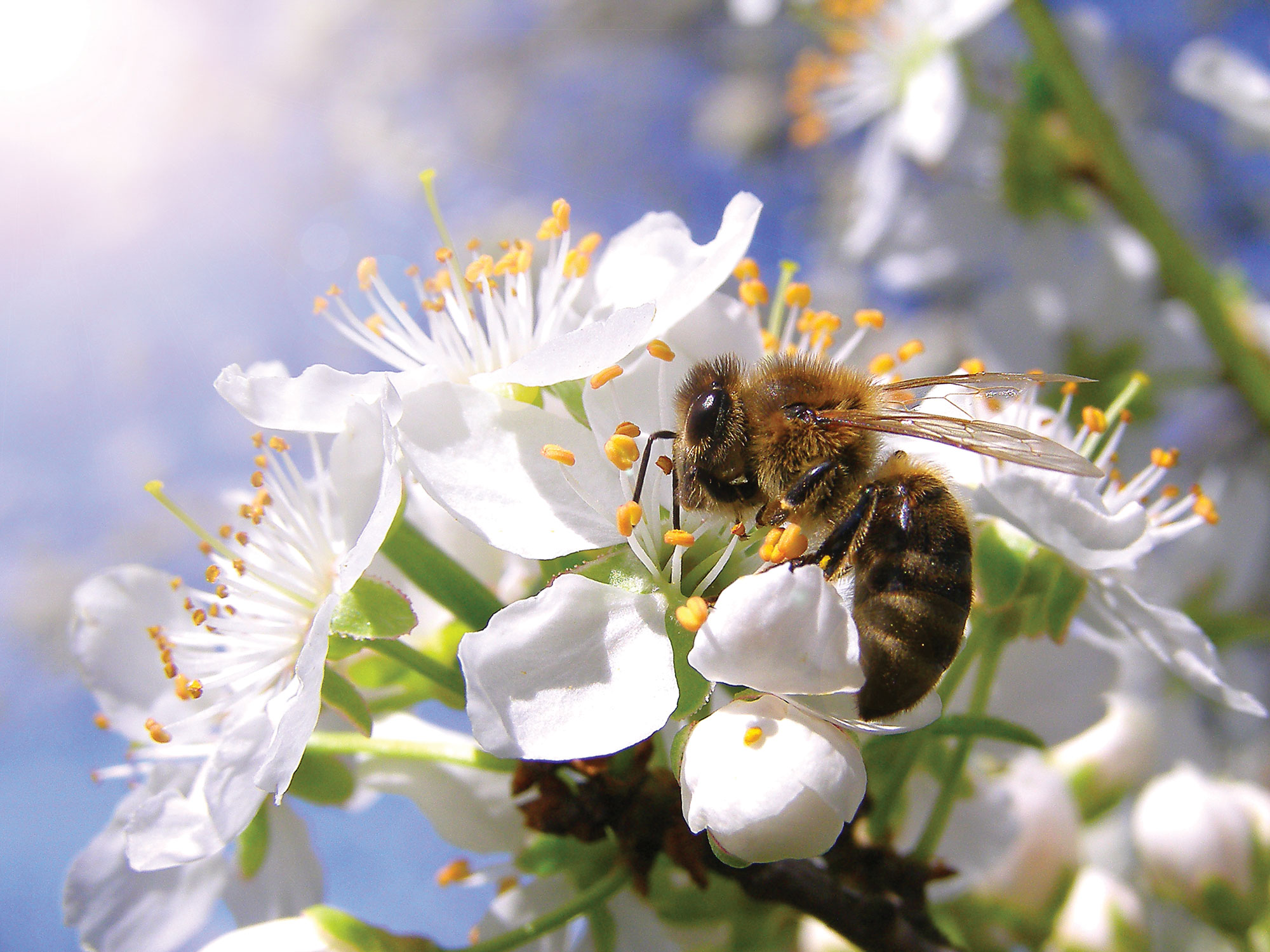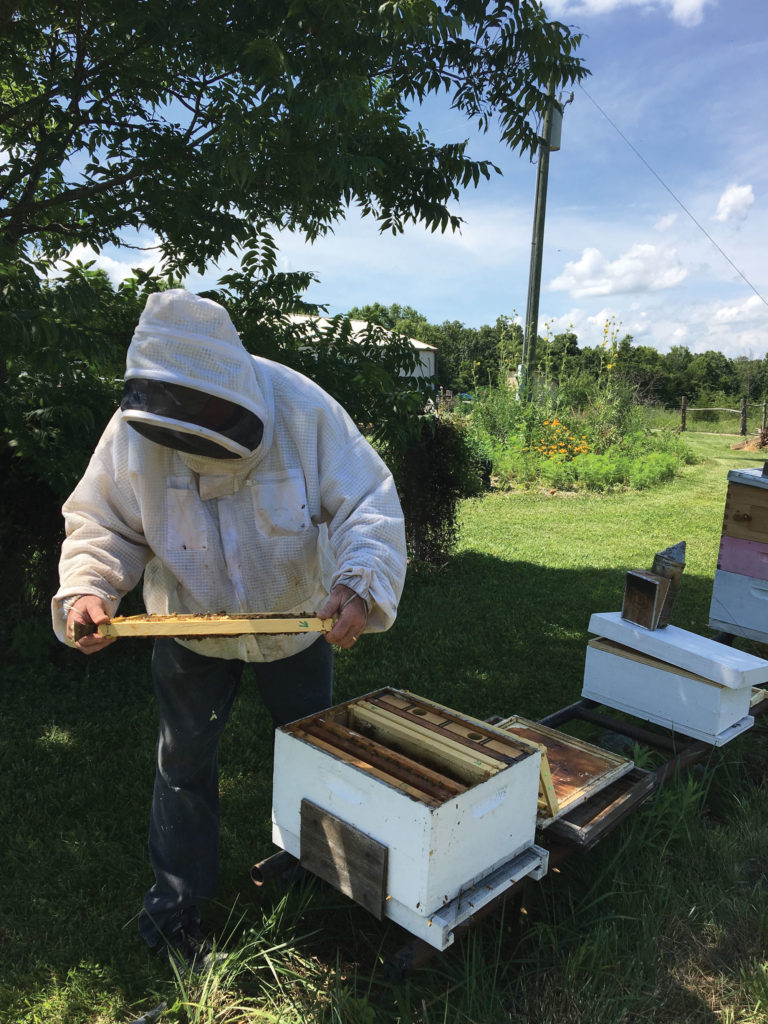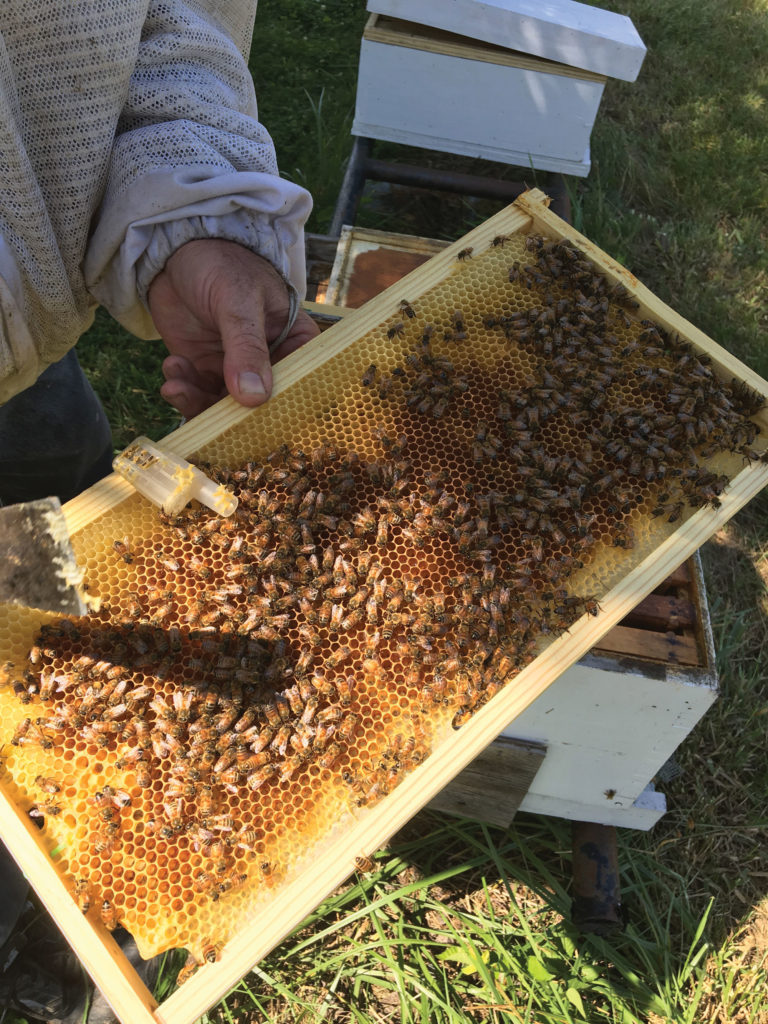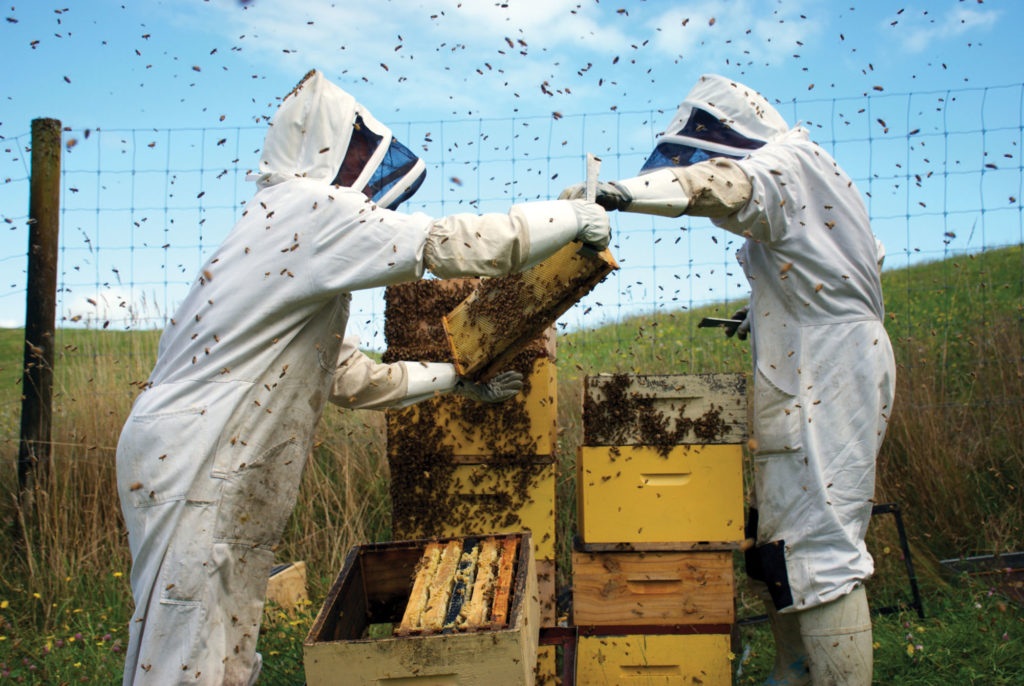
Agriculture’s Unsung Hero
October 17, 2016
Written By Nathan J. Snodgrass
When people think of farming or agriculture, they often imagine rows of crops, tractors and hard-working men and women dedicated to feeding the world.
While these ideas are mostly accurate, they overlook an important contributor known for its distinct buzzing and honey-making prowess.
Bees, though small in size, are agriculture’s unsung hero.
Both wild and honey bees play a vital role in supporting agriculture through pollination. To make honey, bees search for nectar, which comes from crops such as watermelons, almonds and strawberries. These crops’ flowers contain pollen; which bees transfer from crop to crop as they search for more nectar. This process allows these crops to reproduce. Though seemingly simple, the impact these small insects have on agriculture is quite significant.
Small but Mighty
“Bees are very important,” says Moneen Jones, a bee expert and assistant research professor at the University of Missouri. “One in three bites of our food are dependent on honey bees.”
Honey bees and other types of pollinators, such as wild bees, butterflies, certain wasps and the wind, play a key role in plant reproduction.
According to the U.S. Department of Agriculture, pollination by managed honey bee colonies adds at least $15 billion to the value of American agricultural products annually through increased yields and superior-quality harvests.
“Without bees, there is no us,” Jones says. “We wouldn’t survive as a species without honey bees. We need them to pollinate our (food) products.”
Many crops would disappear or significantly dwindle in number without bees. Apples, cherries, blueberries, avocados and many more crops require bees for the bulk of their pollination. Almonds, in particular, use more than half of the nation’s managed honey bee colonies and would be one of the first crops to disappear without bees.
Ray Nabors, a crop consultant and retired University of Missouri researcher and extension entomologist, says honey bees affect agriculture both directly and indirectly.
“If they aren’t directly pollinating what you’re selling, they are pollinating the seed crop that allows you to grow what you’re selling,” Nabors says.
Bees provide pollination for nearly three quarters of the 100 crops that provide 90 percent of the world’s food. In North America, honey bees pollinate almost 100 kinds of fruits, nuts and vegetables.
Jim Duever, an apiarist, president of the Boone County Beekeepers Association and member of the Missouri Beekeepers Association, says honey bees can increase crop yields by 10 to 15 percent for certain crops.
Declining Populations
Despite their important contributions to the economy, bees have been facing massive declines in populations.
Bee populations saw a 44 percent decline in 2015 – a dramatic increase from the average decline of 15 to 20 percent per year.
Since 2006, Colony Collapse Disorder (CCD) has been a major issue plaguing honey bees. CCD is a syndrome specifically defined as a dead colony with no adult bees or dead bee bodies, but with a live queen. Scientists have yet to identify the cause of CCD, but theories abound for what may be causing entire bee colonies to disappear so quickly.
Jon Zawislak, apiculture instructor with the University of Arkansas Division of Agriculture, believes CCD is a result of overstressed bees.
“CCD could not be correlated to a single pathogen or environmental cause, but appeared to result from a combination of factors,” Zawislak says. “Honey bees are being stressed out by many factors that include the Varroa mite, viruses that the mites vector, bacterial diseases, fungal pathogens, habitat degradation, poor nutrition and chemical exposure.”
The Unwelcome Guest
The Varroa mite, a destructive parasite that attacks honey bees and their brood, currently poses the No. 1 threat to bees, according to Zawislak. Varroa mites act as tiny vampires in a honey bee colony by sucking the blood of bees and spreading deadly viruses and bacteria.
“The mites stress the bees’ immune systems, making them more prone to viruses,” Zawislak says.
The mites typically spread by hitchhiking on foraging bees that invade other colonies weakened by Varroa infestations to steal honey. These bees become infected and can carry large numbers of mites back to their home colony.
Most beekeepers, like Duever, rely on miticides to battle mite infestations, but there are other ways to treat hives, including oils, acids, hive screen guards and replacing the queen with resistant stock. Duever treats his hives when he discovers a greater than 3 percent mite-to-bee ratio.
Beekeepers cannot rely on the same product over and over again. Repeated use of the same chemical will lead mites to develop resistance. Zawislak recommends beekeepers use a combination of different methods.
A Learned Skill
In 2008, news about CCD made headlines, which, according to Jones, brought out waves of new beekeepers. The only problem was that these new, inexperienced beekeepers didn’t know what they were doing.
“People were becoming beekeepers, but after two years, they started dropping out,” Jones says. “People aren’t being educated well enough on how to maintain bees.”
Jones sees the lack of commonly known beekeeping best management practices as a major source of problems. Her hope is that beekeeping classes taught through University of Missouri Extension can help build a foundation of knowledge for all beekeepers. The Missouri Master Beekeeper Certification Program was developed to teach beekeepers the necessary skills needed to master the craft. Experienced beekeepers teach the classes, and mentors offer the necessary hands on experience to succeed. Classes are available for those who are just starting, and those who have been beekeeping for a while.
Chemical Controversy
Another theorized cause for bee decline is the widespread use of pesticides. In 2013, Europe instituted a ban, though no longer in effect, on certain pesticides linked to harming bees.
To prevent bees from suffering accidental losses related to pesticides and other chemicals, researchers recommend beekeepers and farmers communicate.
“Many bee poisoning problems could be prevented by better communication and cooperation among the grower, pesticide applicator and the beekeeper,” says a report by Purdue University’s department of entomology.
“Most farmers do not keep bees,” Duever says. “But many of them don’t mind beekeepers bringing them out onto their property. They just need to coordinate together so the pesticides don’t affect the bees.”
Nabors, who worked as the University of Missouri’s state apiary specialist for 20 years, suggests farmers need to be more conscience about bees when applying insecticides.
“The average person thinks it’s possible to grow crops without crop protection products. That is wrong; we need them, but farmers must avoid spraying bees,” says Nabors. “If growers would spray insecticides and pesticides in the evenings—even after dark—that would reduce a majority of the pesticide issues with bees.”
Jones encourages farmers and beekeepers to work together because it benefits both parties. To facilitate a more open channel of communication, she helped found the Missouri Pollinator Conservancy Program through MU Extension. The program offers resources and tools for beekeepers and farmers to communicate about pesticide usage.
Beekeepers can register apiaries through Mo.DriftWatch.org, a site that specifies locations of beehives to farmers who use pesticides. Once registered, beekeepers can purchase large, black-and-yellow flags to identify hives near crop fields for ground and air pesticide applicators.
“We would like to see all beekeepers in agricultural areas registering their hives,” Jones says. “Sometimes there is accidental pesticide drift, and we want to protect beehives from that.”
Finding a Solution
As the list of challenges facing bees grows, so do the number of organizations and researchers dedicated to finding a solution.
“The future of bees is uncertain,” Zawislak says. “But there’s a lot of people working on the problem.”
He says the ultimate goal of researchers is to breed bees with a resistance to mites.
“We’re a long way from our goal, but there are a lot of people who are willing to take up this challenge,” says Zawislak.
Universities are making efforts to identify a solution to the problem. For example, Jones collects samples of honey, beeswax, pollen and bees from hobby beekeepers to test pesticide residue different. She hopes this data will help develop best management practice for beekeepers.
Her lab is also testing for tolerance differences between strains of honey bees to neonicotinoids, a type of pesticide once banned in Europe, to see if one strain is more innately tolerant than others.
Researchers, farmers and beekeepers aren’t the only ones who can make an effort to save the bees. Nabors suggests people buy honey from local beekeepers.
“Local honey is important because you’re helping to pollinate the state,” Nabors says. “You’re getting more out of it than just the honey.”
Duever suggests people plant more flowers to support bees.
“If everyone added 10 percent more flowers to their yards, just imagine the amount of food that would be there to benefit bees,” Duever says.
Though the challenges facing bees persist, the efforts to find solutions to the CCD phenomenon are encouraging. Researchers agree better communication combined with a deeper understanding of honey bee health and an appreciation for their pollination skills will keep agriculture’s unsung hero buzzing and supporting the world’s food supply.





